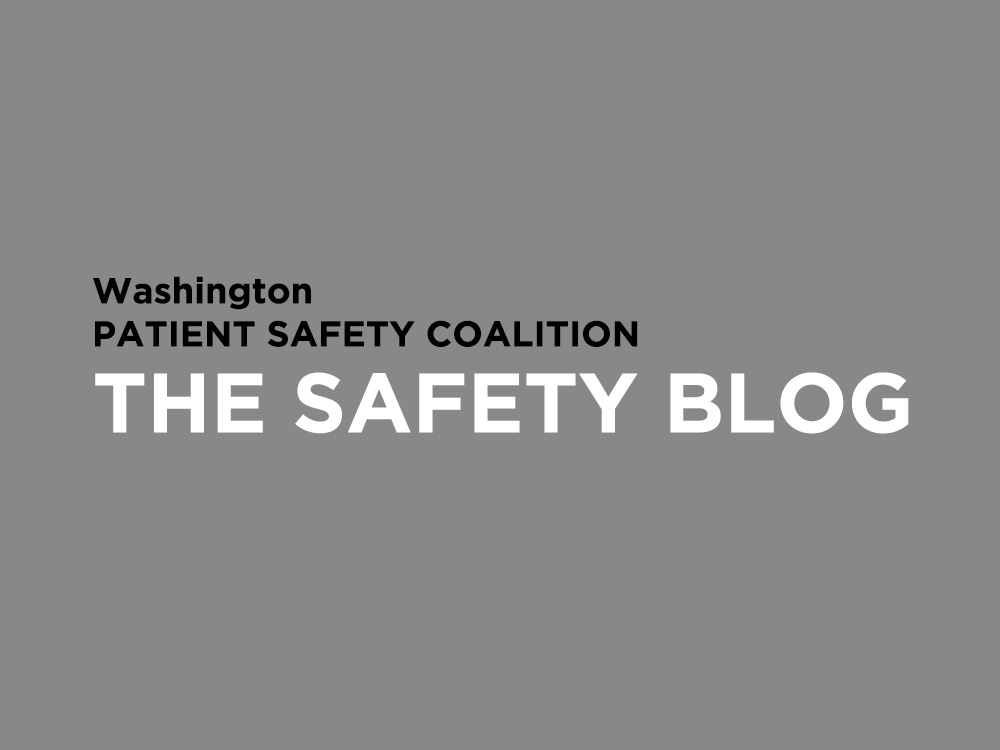- FHCQ Foundation for Health Care Quality
- COAP Care Outcomes Assessment Program
- Spine COAP Care Outcomes Assessment Program
- SCOAP Care Outcomes Assessment Program
- OBCOAP Care Outcomes Assessment Program
- CBDR
- Smooth Transitions
- WPSC Patient Safety Coalition
- Bree Collaborative Bree Collaborative
- Health Equity Health Equity
- Admin Simp
- Contact Us
Creating Culture of Safety Takes Time, Commitment

Creating Culture of Safety Takes Time, Commitment
by Cathie Furman, RN
Senior Vice President, Quality and Compliance, Virginia Mason Medical Center, Seattle
As lead executive of Quality and Compliance for an organization that was named a Top Hospital of the Decade by The Leapfrog Group, I am often asked to share the Virginia Mason story. I usually tell people who are truly interested in Virginia Mason’s story to read Transforming Health Care: Virginia Mason Medical Center’s Pursuit of the Perfect Patient Experience, by Charles Kenney. But, in a nutshell, the underlying reason for Virginia Mason’s success and the organization’s ability to sustain that success is our culture.
Virginia Mason’s culture of safety was not something that happened overnight. It didn’t happen after one or two years, either. It’s something we’ve been developing for more than a decade, and it continues to evolve and be improved.
Edgar Schein, the noted organizational development expert, has a great definition of culture as a product of joint learning – a pattern of shared basic assumptions learned by a group as it solved its problems of external adaptation and internal integration.
In short, culture is the way we do things.
Virginia Mason’s safety culture journey started quite some time ago. If we are pinpointing a time in history, I think it would be 2002, a momentous year on several fronts: Virginia Mason adopted the Toyota Production System (TPS) as our management method, we launched our first five-year strategic quality plan, and we conducted our first culture of safety survey.
That year, we also implemented our Patient Safety Alert (PSA) system, which may be the best way to illustrate our culture of safety and how it has grown.
Virginia Mason’s PSA system requires all team members who encounter a situation likely to harm a patient to make an immediate report and “stop the line” (i.e., cease any activity that could cause further harm). This ability of any worker to stop the assembly line to correct a mistake is something we saw on a powerful study trip to Japan while we were first beginning to look at TPS and determine whether we could adapt it to health care.
A foundational element of Virginia Mason’s PSA system is that anyone can and should report any concerns or incidents that could harm patient safety. Team members are empowered to cease the activity of physicians or other personnel, established treatments, new treatments, physical locations, equipment or anything else that shows a defect or process breakdown. This has been instrumental in a significant cultural shift where team members are empowered to call PSAs for not only actual mistakes or harm, but also any behaviors that get in the way of providing safe care. We are now piloting a process by which the identification of safety concerns are now occurring on the front line at the twice daily shift huddles prior to a PSA being submitted – to further engage front line staff.
From the system’s inception through August 2014, more than 48,000 PSAs were reported. The system is staffed 24 hours a day, seven days a week so we can respond immediately to support staff and patients if necessary. Most reports are processed within 24 hours, a significant improvement from when reports took up to 18 months to resolve. Patient safety at Virginia Mason has increased and medical claims have dropped, thanks to the PSA system.
Of course, none of this would have happened without engaged and committed leadership, and that starts at the top with our board of directors. To this day, our board is keenly interested in our safety work and actively participates in reviewing the most serious of our PSAs – those we call “red PSAs” because they either have caused or have the potential to cause serious harm to a patient. All red PSAs are presented to the board quality committee, and it is the board members who approve corrective action plans and confirm the process that led to the PSA is mistake-proofed.
We know our PSA system is pretty unique in health care, and it is a direct result of our application of TPS as our management methodology, which we call the Virginia Mason Production System.
The truth is, we aren’t doing anything that any other health care provider wouldn’t be able to do, but it takes leadership and a commitment to safety. Building a culture of safety is a long-term process, and while we are very proud of our track record at Virginia Mason, we also know we have a long way to go to achieve the perfect patient experience.
What have you tried at your organization to develop a culture of safety? Do you have any key learnings you can share?
Comments? Share with us here.
Recent Posts
- TakeCharge This Patient Safety Awareness Week: 5 Steps to Safer Healthcare
- Stigma & Bias in Healthcare: The Obstacles, Consequences and Changes Needed
- Agility in Crisis: How The Everett Clinic responded to COVID-19
- Collaboration over Competition: How Pediatric Hospitals Can Thrive When They Work Together
- Reducing Stress for Health Professionals During the COVID-19 Pandemic

